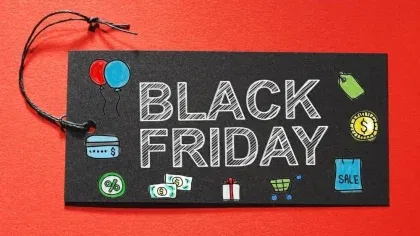
I recently watched a video of a Target manager standing atop his checkout, delivering a rousing speech to his staff before opening the door to Black Friday shoppers, rallying his troops as if he was preparing them for battle.
In 2016, the mayhem that was Black Friday was bigger than ever. Although shoppers spent on average $10 less than they did last year, there were three million more Black Friday shoppers in 2016 than in 2015, driving $3.34bn (a 33% increase) in sales.
However, mercifully for the staff who had to brace themselves for the sieges, an increased number of shoppers opted to buy online, rather than in bricks and mortar stores. In 2015, some 103 million people bought online during Black Friday, compared to 102 million in-store. This year, this shift has become even more prominent, with over 108 million shoppers buying online, and 99.1 million braving the bargains in person according to the NRF.
In particular, mobile has emerged as a winner of Black Friday 2016, with retailers including Amazon, Walmart, and Target reporting their busiest day for mobile traffic. Even before the Friday was over, retailers had reported a record $771 million in revenue from #mobile devices
Better still, conversion rates are reported to have increased by 16.5% since 2015, with cart abandonment rates dropping by 3%. While you might think this is a reason to break out the Prosecco and congratulate yourself on a job well done, some perspective is needed: in 2016, retailers still lost 69% of online Black Friday shoppers who abandoned their purchase.
No organization likes to leave money on the table, and trying to recoup it presents a race against time – after all, not many customers are likely to continue an expensive purchase once Black Friday has passed. Moreover, some of the usual discount incentives are not applicable in this instance. With that in mind, here are a few tips to approach cart recovery during this Holiday season.
- Get smart: Real-time marketing software should be your starting point. With this technology, this allows you to construct emails with ‘smart blocks’ – sections of personalized content that allow you to insert banners, countdown timers, custom recommendations and social proof into your triggered recovery messaging.
- Real-time tracking: With time is of the essence, being able to monitor cart abandonment as it happens is crucial. While some methods can take a while to alert you to the abandonment (waiting for a session to time out, for example), use software that can track abandonment in real-time, immediate triggering a recovery email containing the contents of their basket.
- Make their return easy: If you want the customer back, make it easy for them. The contents of their cart, complete with an enticing visual of their product, goes without saying, and so too should there be a prominent call-to-action that will get them quickly back into the customer journey to pick up where they left off.
- Make it personal: A gentle reminder with a personal greeting and/or personalized recommendations to complement their cart may not only tempt them back but also encourage additional impulse purchases.
- Create a sense of urgency: If the thought of millions of other shoppers simultaneously looking for bargains isn’t enough to motivate a purchase, a recovery email that displays your current stock levels could hammer the reality home.
- Remind them why they have good taste: Was the shopper having second thoughts? Reinforce their decision with positive client testimonials or user reviews to help encourage them back.
- Make their lives easier: Unexpected delivery charges are often cited as a cause for cart abandonment – substantial postage costs could stop a Holiday offer from being quite so much of a bargain. Still, a cart recovery message is a good opportunity to remind shoppers of any click & collect or alternative delivery options you offer.
- Remove any doubt: With the chance to save money, the temptation to impulse will be higher than usual. However, impulsiveness can quickly lead to regret and abandonment before purchase. Give reassurance in a recovery message that points out your returns policy, any money back guarantees you offer and if you deliver for free.
From a consumer’s perspective, it is easy to empathize with some of their possible reasons for bailing out on a sale. With time (and rapidly dwindling stock levels) against them, the need for a simple, rapid and seamless checkout process is vital. For those sites that required a special Black Friday code, being able to easily apply and see the results of the discount (along with delivery charges) before getting to the payment stage can make or break a conversion.
So too, is the need for streamlined registration processes. With customers likely to be visiting sites they have not before, the absence of a ‘guest checkout’, or facing a lengthy form to fill out before trying to get hold of that last MacBook Pro creates a significant obstacle.
With a checkout process that has been honed and streamlined to be stress-free on desktop, tablet or mobile, complete with a fully equipped cart recovery arsenal, you still have time to positively impact sales before the year is out.